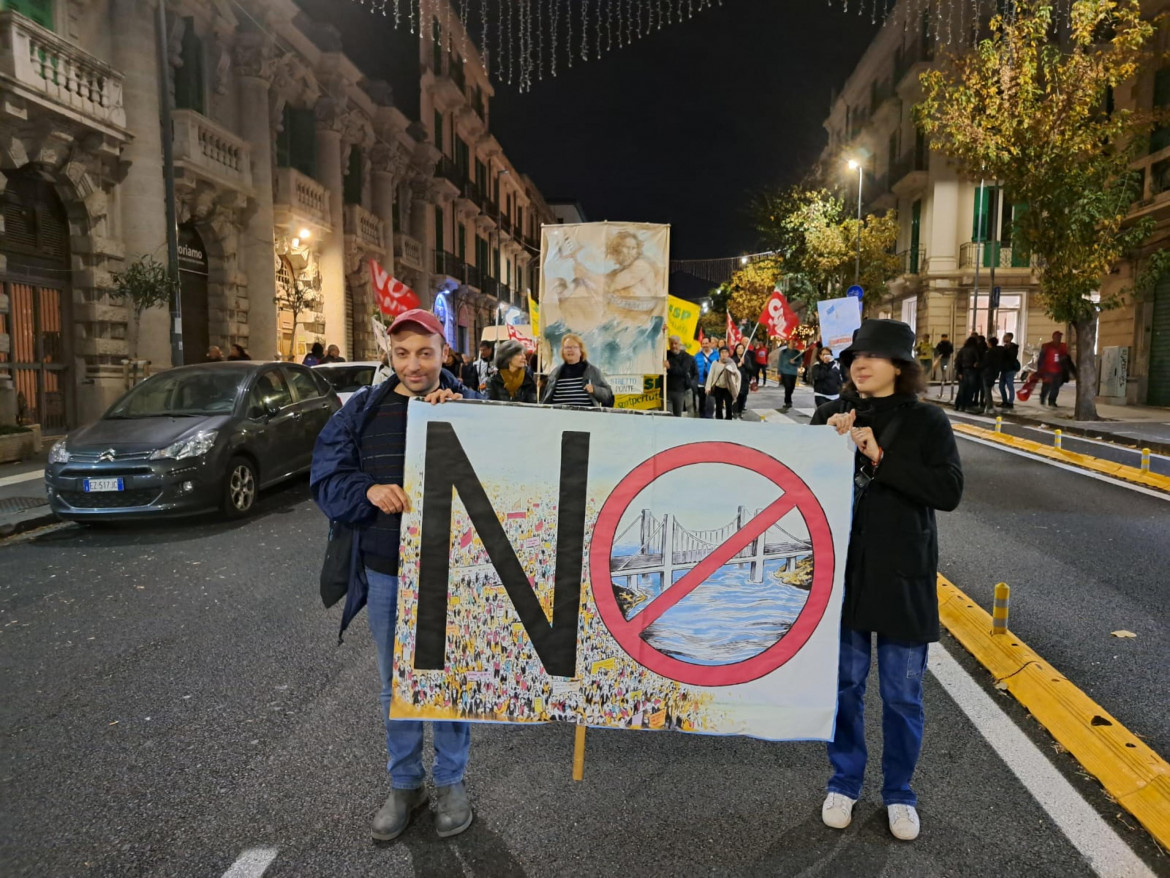Commentary
‘No Bridge’ movement becomes ‘Instead of the Bridge’
We who oppose the devastation that would be wrought by a gigantic, useless and harmful ecological blight, which we don’t want and don’t need, actually care about the future and the development of the Strait.

We’ve never wanted it and never will: there are so many of us, born on the shores of the Strait and practically already wearing our “No Ponte” (“No Bridge”) T-shirts. Over the years, the logo on the T-shirt has adorned flags, stickers, bracelets. It added “A” from Anarchy (but we don’t need an “A”: we just need the “O” of “NO”), became red, blue, yellow, green, was written on the walls, on the palms of our hands, on the banners at the front of the marches.
As for us, we have always lived with the specter of the Bridge, as with that of the Earthquake. For us, “the Earthquake,” without any further specification, can only mean one, that of 1908. Likewise, there is only one Bridge: the one that has been discussed since the days of the Romans and Carthaginians and that hovers over our sea along with all the other nautical myths: Cola Pesce, the merman who drags you underwater, Morgana, who fools sailors into thinking they can swim across the Strait, Scylla and Charybdis, the mythical rocks crushing ships with their unpredictable eddies. But while Cola stands for a real force, Morgana for a mirage and Scylla and Charybdis for the destructiveness of the sea, the Bridge, in the end, doesn’t stand for anything at all.
The city has always labored under the burden of this plan; suffered under it, as if it was the colonialist hand expected to come down sooner or later on a city wounded by earthquakes, now accustomed for at least a century to being seen as a mere stopping point after having been, from the classical age to the 19th century, the most stylish and indispensable gateway to the Mediterranean in all of Sicily. I am talking about Messina, but the same applies to Reggio Calabria on the other shore: two cities buried under the mythmaking around a “great work” (can there be an older notion that that?), two cities that no one talks about except in the context of erasure and refusal. As a result, the historic No Bridge movement, which has always cut across the political spectrum (while certain historic right-wing militants have suddenly lost their drive since the bridge has become a project of this particular government), has now taken a more assertive and proactive form: “Instead of the Bridge.”
Because we are tired of being cast as some flat-earther weirdos who oppose the arrival of the magnificent and progressive future. Instead, we want to emphasize that we who oppose the devastation that would be wrought by a gigantic, useless and harmful ecological blight, which we don’t want and don’t need, actually care about the future and the development of the Strait. We want more ships, and better ships. We want more facilities, and we want more publicity for these places we live in. We want more tourism: not concrete pillars supporting a road, with ships whizzing by without stopping, but shuttles that would take tourists to visit the two Caravaggio works housed at the Messina Museum, on the seafront, right across the two statues, the Riace Bronzes, on the opposite shore. We want the beach of the village of Torre Faro (the ancient fishing village that the bridge would raze to the ground), which National Geographic has called the most beautiful in Italy, to be known to everyone, not just to us – even if we have jealously guarded it until now. We want the Strait to be declared a World Heritage Site, and we want eyes upon it, certainly: but eyes full of love and care.
Obviously, the prevailing winds have changed compared to a year ago. While in recent times some people were keeping silent, convinced that, as always, nothing would come of it, now the idea of open construction sites, with the senseless and endless effort to manage them and with the specter of the city paralyzed because of a project that will be blocked because of the innumerable problems it will bring, has brought people back to the streets and brought the flags back to the balconies. For decades, the city has been full of ghost buildings – from the old Regina Margherita Hospital to the hypermarket just across the street from the Caronte – burned ruins, vandalism and landfills; it doesn’t need ghost construction sites as well. And now, since the list of expropriated houses was made public, the fear has taken concrete shape.
Even those who previously hailed the bridge, like former mayor Cateno De Luca, have changed their minds. Incumbent mayor Basile has spoken out clearly against it. The other former mayor of the last decade, Accorinti, is himself a symbol of the struggle: years ago, he climbed the old disused electric pylon (another ghost structure) to protest the threat of the bridge, becoming an icon for the protests. And everyone, and I do mean everyone – including those who say they’re in favor of it because they hope to gain something from the huge inflow of money that lines the pockets of the savvy every other decade – knows that the money could be used for things that are needed and urgent, from the water system to the roads, enhancing the seafront, supporting fresh new ideas and tourism. All better than the Bridge.
Originally published at https://ilmanifesto.it/no-ponte-tasche-furbe-sottraggono-risorse-a-servizi-urgenti on 2024-05-19
